How to Stop Leather-on Leather Squeaking
A key accessory for any outfit, a good leather jacket can take you from day to night in style. But before you head out on your next adventure, make sure your leather jacket doesn’t start making weird noises. If you’ve ever been in a room with someone who’s just got a new leather couch, you know the telltale signs of leather-on-leather squeaking.
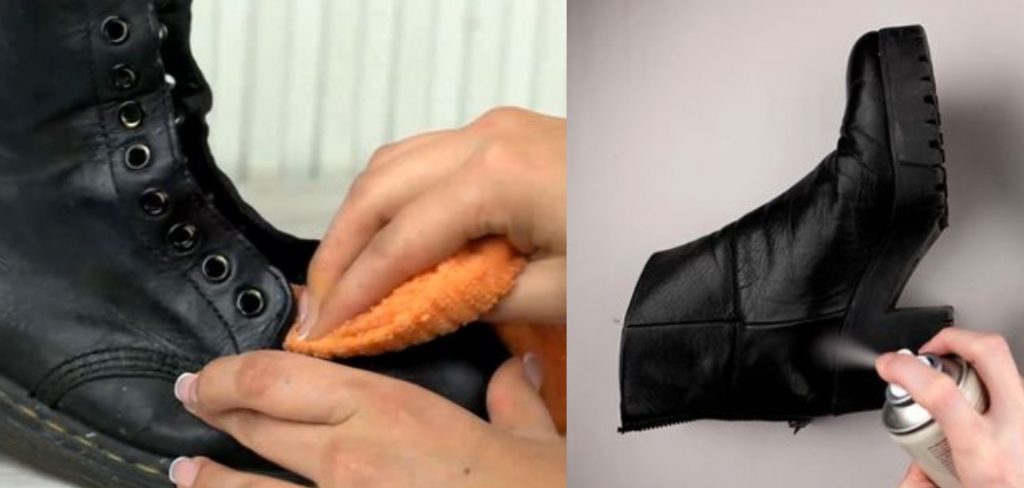
It can be incredibly annoying, but luckily, there are some ways to stop it from happening. This blog post will discuss what causes leather-on-leather squeaking and how to stop leather-on leather squeaking. So read on to learn more!
What is Leather-on-leather Squeaking?
Leather-on-leather squeaking is the sound produced when two pieces of leather rub against each other. This can happen with any type of leather – jackets, bags, shoes, furniture – and it’s a common issue that many people face. The noise can range from a soft creak to a loud screech, and it can happen when you’re moving around or even just sitting still.
You may have experienced this sound when sitting on a leather couch or wearing a leather jacket. It can be quite embarrassing, especially in quiet environments like libraries or meetings. But don’t worry – you’re not alone in this struggle.
What Causes Leather-on-leather Squeaking?
There are a few different factors that can contribute to leather-on-leather squeaking:
Friction:
The most common cause of leather-on-leather squeaking is friction. When two pieces of leather rub against each other, the fibers in the leather can create a noise. This is more likely to happen when the leather is new or has been recently conditioned, as the fibers are still stiff and have not had time to soften.
Humidity:
Humidity can also play a role in leather-on-leather squeaking. When leather is exposed to high levels of moisture, it can absorb the moisture and become softer. This softening can cause the leather to rub against itself more easily, resulting in squeaking.
Loose Fittings:
Another factor that can contribute to leather-on-leather squeaking is loose fittings. If a piece of leather is not properly fitted or secured, it may move around more and create friction with other pieces of leather.
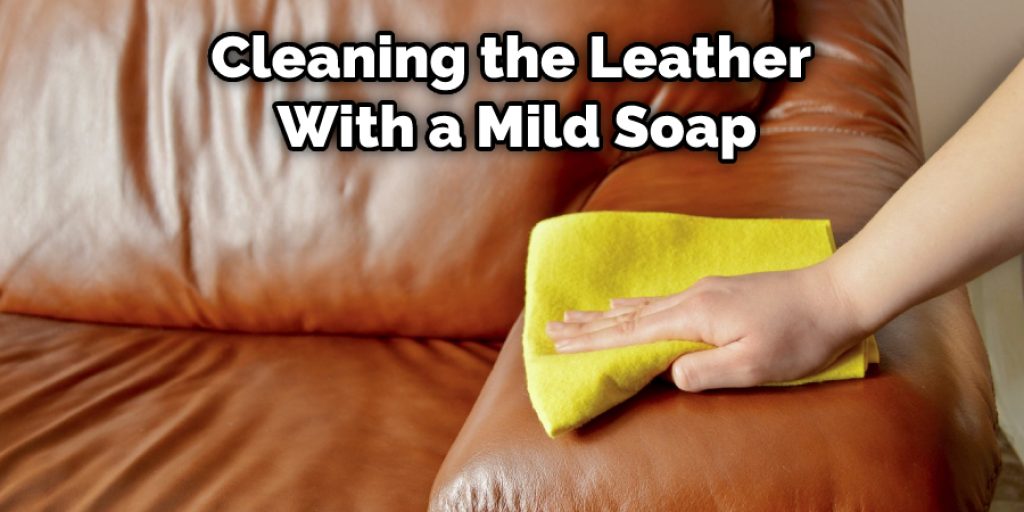
9 Reasons That Causes Leather-on Leather Squeaking:
1. When The Leather is New:
Any new leather product has a high chance of squeaking when you move around in it. The leather fibers are still stiff and need to be broken in. The best way to stop this is to wear your leather jacket or couch for a few days. As you use it, the fibers will soften, and the squeaking will stop.
2. When The Leather is Dry:
If your leather is dry, it can cause the fibers to become brittle and more likely to squeak when you move. To prevent this, keep your leather products conditioned with a good quality leather conditioner. This will help to keep the fibers supple and less likely to squeak. You should also avoid exposing your leather products to direct sunlight or heat, as this can dry out the leather.
3. When The Leather is Dirty:
If your leather gets dirt or grime build up, it can also cause the fibers to become brittle and more prone to squeaking. Regular cleaning and conditioning will help keep the leather in good condition and prevent this from happening. If you think the dirt is the cause of the squeaking, you can try cleaning the leather with a mild soap and water solution.
4. For Cheap Quality Leather Material:
This is one of the reasons that cheap quality leather squeaks. In addition, the lower-quality materials are not as durable and are more likely to break down over time. This causes the fibers to become brittle and more likely to squeak. If you want to avoid this, invest in high-quality leather products. The initial costs may be higher, but they will last longer and save you from the annoyance of squeaking.
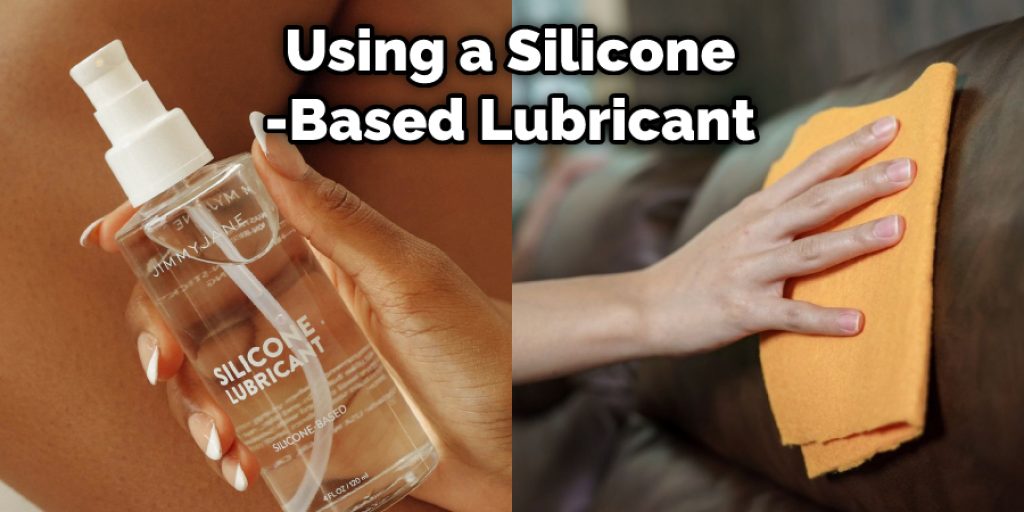
5. When You Move Suddenly:
If you move too quickly or make sudden movements, it can also cause the leather to squeak. This is because the fibers are not used to being moved around so quickly and can break down. To avoid this, try to make slower, more gentle movements when wearing or using your leather products. But hey, it’s leather – it’s meant to be worn and used, so don’t be afraid to move around in it!
6. If the Leather is Stretched:
If the leather is stretched too much, it can also cause the fibers to break down and squeak. This is because the fibers are not meant to be stretched out so far and can’t handle the strain. To avoid this, try to avoid stretching your leather products too much. If you do need to stretch them, do so slowly and carefully.
7. If the Leather is Torn:
If the leather is torn, you’ll need to patch it up before you can lubricate it. First, use a leather adhesive or glue to attach a piece of leather over the hole. You can also use a heavy-duty needle and thread to sew the two leather pieces together. Once the leather is patched up, you can lubricate it to prevent squeaking.
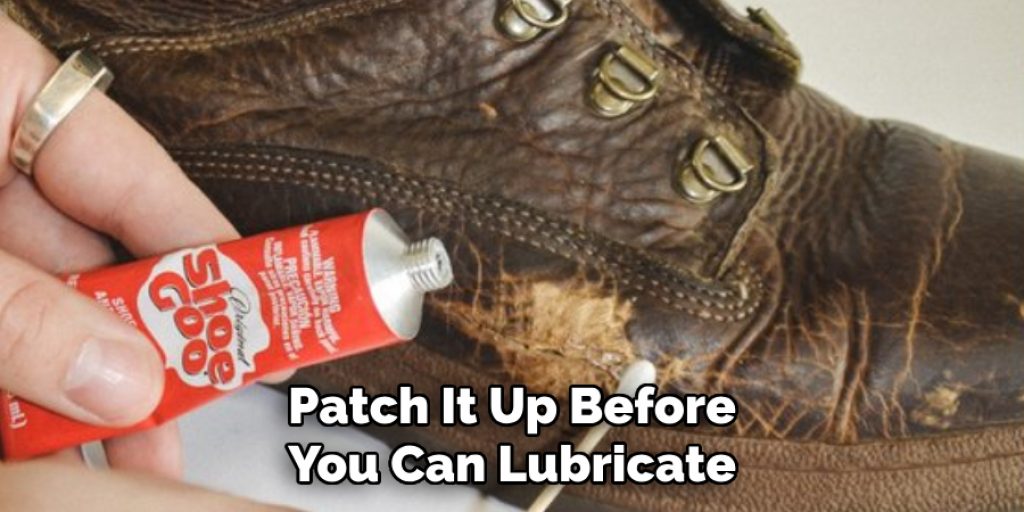
8. If the Leather is Too Thin:
Thin leather is more prone to squeaking because there aren’t enough fibers to absorb the friction. This is often seen in cheaper leather products or pieces that have been worn down over time. To avoid this, invest in thicker and higher-quality leather products.
9. If the Leather is Not Properly Treated:
Lastly, if the leather has not been properly treated or is of poor quality, it can be more prone to squeaking. This is why it’s important to do your research and invest in high-quality leather products from reputable brands.
How To Stop Leather-On-Leather Squeaking?
Now that we know what causes leather-on-leather squeaking let
These are the main reasons for leather-on leather squeaking. But if you follow our tips, you can easily stop your leather products from making that annoying noise.
11 Effective Ways How to Stop Leather-on Leather Squeaking:
1. Using Silicone Based Lubricant:
One of the most effective ways to stop leather-on-leather squeaking is by using a silicone-based lubricant. This will create a barrier between the two leather pieces and prevent them from rubbing together. You can find silicone lubricants at most hardware stores or online. When applying the lubricant, make sure to use a small amount and rub it in evenly.
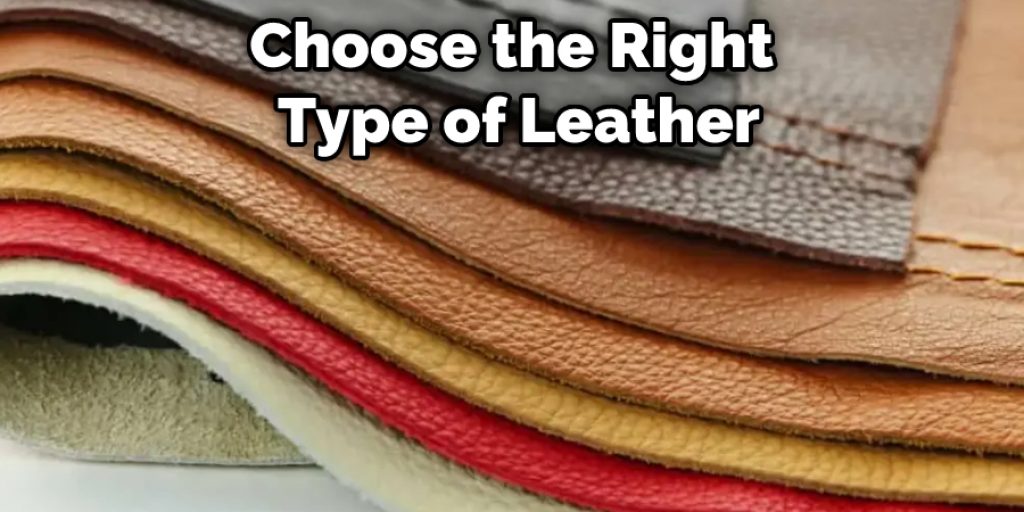
2. Applying Talcum Powder:
Talcum powder is another effective way to stop leather-on-leather squeaking. Simply sprinkle some powder on the squeaking area and rub it in. The powder will create a barrier between the two leather pieces and prevent them from rubbing together. Just make sure to use a small amount, as too much powder can leave a white residue on your leather.
3. Using A Nail File:
If you don’t have any talcum powder or silicone lubricant, you can try using a nail file. First, rub the file over the area that is squeaking to create a barrier between the two leather pieces. If the leather is very dry, you may need to rub the file over it a few times to get the desired effect. This is a great quick fix, but keep in mind that it may not be a long-term solution.
4. Rubbing Soap on The Area:
Rubbing soap on the area that is squeaking can also help to stop the noise. The soap will act as a lubricant between the two pieces of leather and help reduce the amount of friction causing the squeaking sound. Simply rub a small amount of soap onto the squeaking area and then wipe it off with a clean cloth. Repeat this process until the squeaking noise has stopped.
5. Using Leather Conditioner:
Leather conditioner is another effective way to stop leather-on-leather squeaking. Apply a small amount of conditioner to the squeaking area and rub it in. The conditioner will help to lubricate the leather and stop the squeaking. If the leather is very dry, you may need to apply a second coat of conditioner. Just make sure to use a conditioner specifically made for leather products. The wrong type of conditioner can damage your leather.
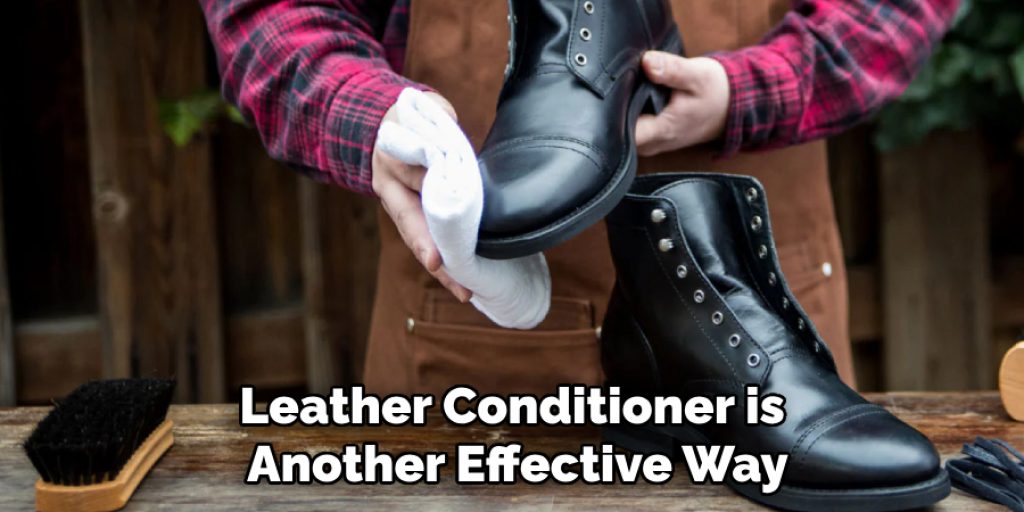
6. Applying Wax:
You can also try applying a small amount of wax to the squeaking area. The wax will help to lubricate the leather and stop the squeaking. Apply a small amount of wax to the squeaking area and rub it in. Then, buff the area with a soft cloth. You can also use a commercial leather conditioner or polish. It’s important to note that using wax or polish may darken the color of your leather, so it’s best to test it on a small, inconspicuous area first.
7. Using A Hairdryer:
If the leather is very dry, you can try using a hairdryer to stop the squeaking. Simply hold the hairdryer up to the squeaking area and let the heat soften the leather. Once the leather is soft, you can apply a small amount of wax or conditioner to help lubricate it. You can also use a hairdryer to dry wet leather, which can sometimes cause squeaking.
8. Applying A Small Amount of Water:
Water can act as a temporary fix if you don’t have any lubricant on hand. Spritz a small amount of water onto the offending area and rub it in with your fingers. The water will help hold the leather fibers together so they don’t rub against each other and create that squeaking noise. Just be sure to use as little water as possible, as too much can damage the leather.
Following these tips will help to effectively stop leather-on-leather squeaking. However, keep in mind that if the squeaking persists, it may be a sign of a bigger issue with your leather product. In this case, it’s best to take it to a professional for repair.
The Best Way to Prevent Leather-on-Leather Squeaking:
While these tips can help stop leather-on-leather squeaking, the best way to prevent it from happening in the first place is by properly caring for your leather products. This includes not exposing them to extreme temperatures or humidity, conditioning them regularly, and storing them in a cool, dry place. By taking good care of your leather products, you can ensure they stay in top condition and avoid any squeaking issues.
You can also try using a leather conditioner or lubricant regularly as a preventative measure. This will help keep the leather soft and flexible, reducing the likelihood of squeaking. You can also try using products specifically designed to prevent leather-on-leather squeaking, such as saddle oil or leather balm.
Helpful Tips to Avoid Leather-on Leather Squeaking:
1. If you are looking to avoid any squeaking, it is important to choose the right type of leather. You will want to look for a softer, less textured leather. This will help reduce the amount of friction between the two pieces of leather and minimize any potential squeaking.

2. If you are using a silicone lubricant, be sure to apply it sparingly. Too much lubricant can make the squeaking worse.
3. Be sure to clean and condition your leather regularly. This will help keep the leather soft and supple and reduce the risk of squeaking.
4. If you live in a humid climate, consider using a humidifier in your home. This will help keep the leather from drying out and becoming brittle, leading to squeaking.
5. If you have trouble finding a solution that works for you, consider consulting a professional. They will be able to help you find the root of the problem and provide you with more customized advice.
Frequently Asked Questions:
Q: Can I Use Olive Oil or Vegetable Oil as a Lubricant for Leather-on-leather Squeaking?
A: No, it is not recommended to use olive oil or vegetable oil as a lubricant for leather products. These oils can go rancid and cause damage to the leather over time. It is best to stick to products specifically designed for use on leather. You can also try using talcum powder or a nail file as alternatives. It is important to choose a lubricant that will not harm the leather in the long run. You can also consult a professional for advice on which lubricant is best for your specific leather product.
Q: Will Using A Hairdryer Damage My Leather?
A: As long as you use the hairdryer on a low setting and do not hold it too close to the leather, it should not damage it. However, be careful not to overheat the leather as this can cause it to dry out and become brittle. Thoroughly condition the leather after using a hairdryer to prevent any potential damage. It is always best to consult a professional for specific advice on how to care for your leather products.
Q: How Often Should I Clean and Condition My Leather Products?
A: It is recommended to clean and condition your leather products every 3-4 months. This will help keep the leather soft and supple, reducing the risk of squeaking. However, if you notice any dryness or stiffness in the leather, it is best to clean and condition it more frequently as needed. But be sure not to overdo it, as too much cleaning and conditioning can also damage the leather. It is always best to follow the manufacturer’s instructions or consult a professional for advice on caring for your specific leather products.
Q: What Is The Best Way To Store Leather Products?
A: When not in use, store leather products in a cool, dry place away from direct sunlight. It is also important to avoid storing leather products in plastic bags, as this can cause the leather to dry out and become stiff. Instead, use a breathable cloth bag or cover to protect your leather products. If you have any delicate or expensive leather items, consider using acid-free tissue paper to wrap them before storing them. This will help prevent any potential damage from humidity or chemicals in the air. Remember to also clean and condition your leather products before storing them for an extended period of time.
Final Words
Leather-on-leather squeaking is a common problem, but it can be easily fixed. There are several ways how to stop leather-on leather squeaking, and most of them are easy and inexpensive. The best way to stop leather-on-leather squeaking depends on the severity of the problem and what type of materials you have available.
In this post, we’ve shown you how to stop leather-on-leather squeaking using a few different methods. So, if you’re having trouble with your shoes or any other piece of leather furniture, try one of these methods and see if it works. We hope you find these tips helpful!




